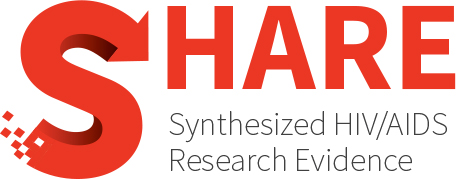Onset and predictors of first-line antiretroviral therapy treatment failure among children in Ethiopia: A systematic review and meta-analysis
Abstract
Introduction: The emergence of First-line Antiretroviral Therapy (ART) regimens fails; it necessitates the use of more costly and less tolerable second-line medications. Therefore, it is crucial to identify and address factors that increase the likelihood of first-line ART regimen failure in children. Although numerous primary studies have examined the incidence of first-line ART failure among HIV-infected children in Ethiopia, national-level data on the onset and predictors remain inconsistent. Hence, this study was conducted to fill the gaps in determining the onset of first-line ART failure and its predictors among HIV-infected children in Ethiopia.
Methods: Articles related to our topic of interest were searched using a systematic approach in national and international electronic databases. The retrospective follow-up cohort studies published in English up to 2022 were included. The data were extracted using a Microsoft Excel spread sheet and exported into Stata™ Version 17.0 for further management and analysis. The level of heterogeneity was quantified using I2 test together with a 95% confidence interval (CI). The incidence of the primary estimates was estimated using a random effects model in the Dersimonian-Lairedmethod. Subgroup analysis, Meta regression, and sensitivity analysis were computed to identify the source of heterogeneity but not explained. The predictors of first-line ART failure were explained using relative risk (RR) with 95% confidence interval (CI).
Results: Ten studies having a total of 5446 children were included. The pooled onset of first-line ART failure was 3.18 (95% CI: 1.91, 4.44) per 100 child-years of observations. Those study participants who began ART at an advanced WHO clinical stage at ART initiation had a 3.05 (95% CI: 1.47, 6.36), having poor ART adherence had a 2.19 (95% CI: 1.29, 3.70), and having TB-HIV coinfection at ART initiation had a 1.43 (95% CI: 1.06, 1.94) times higher chance of experiencing first-line ART failure than their corresponding counterparts.
Conclusion: The onset of first-line ART failure was high to achieve the 2030 UNAIDS target of ending the AIDS epidemic. Advanced WHO clinical stage, poor first-line ART adherence, and having TB-HIV coinfection were identified predictors. Hence, community HIV screening should continue to strengthen early ART initiation, and the attention of ART adherence should be kept to achieve ending the AIDS epidemic. The baseline tests and diagnosis, like TB diagnosis should be maintained for HIV-infected children while they begin ART.
Authors
Birhanu MY, Bekele GM, Endalew B, Alemu S, Lashargie CT, Birhanu DA, Mulualem A, Jemberie SS
Year
2024
Topics
- Population(s)
- General HIV+ population
- Prevention, Engagement and Care Cascade
- Engagement and Care Cascade
- Prevention
- Engagement and Care Cascade
- Retention in care
- Treatment
- Prevention
- Education/media campaigns
- Testing
- Testing
- Co-infections
- Tuberculosis
